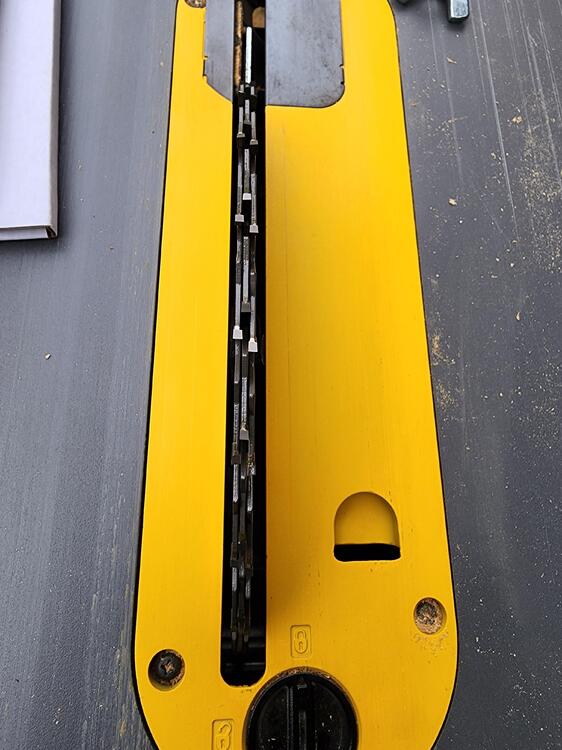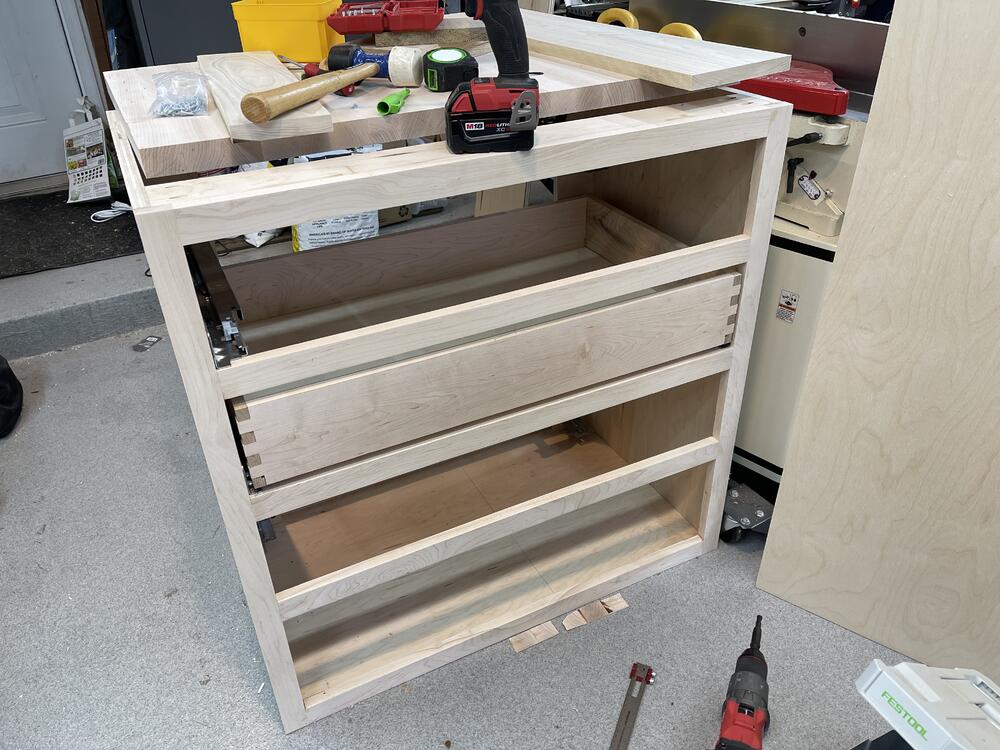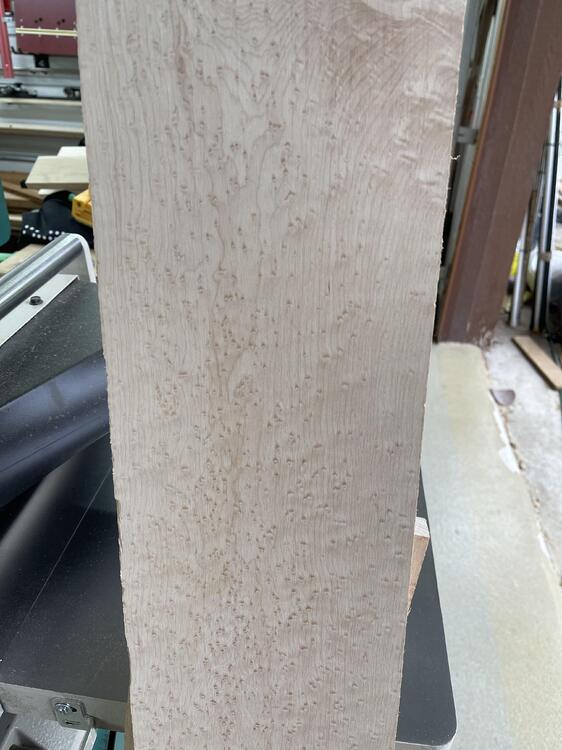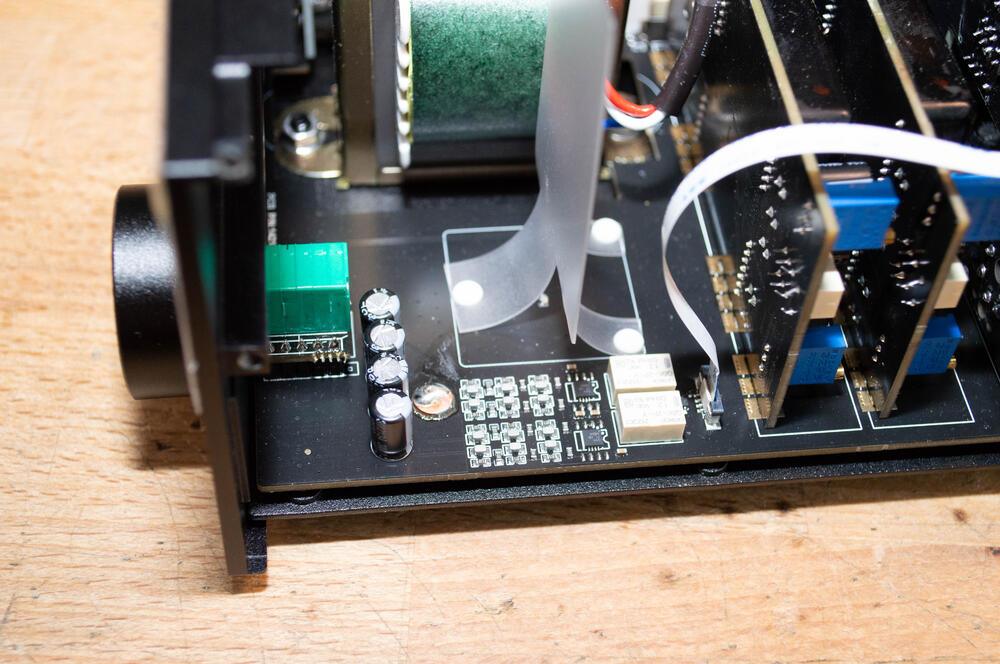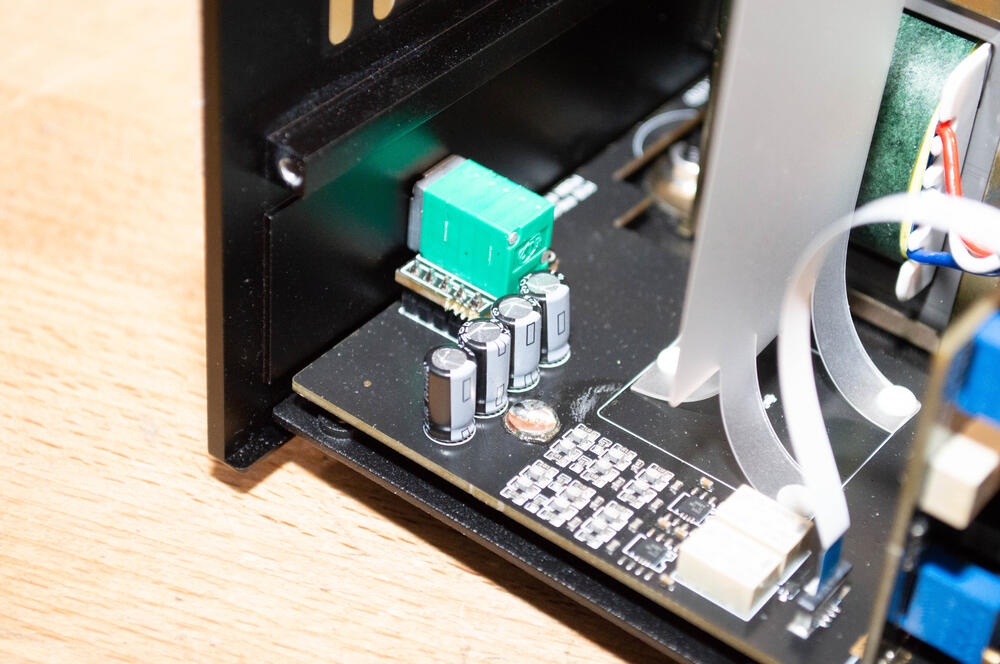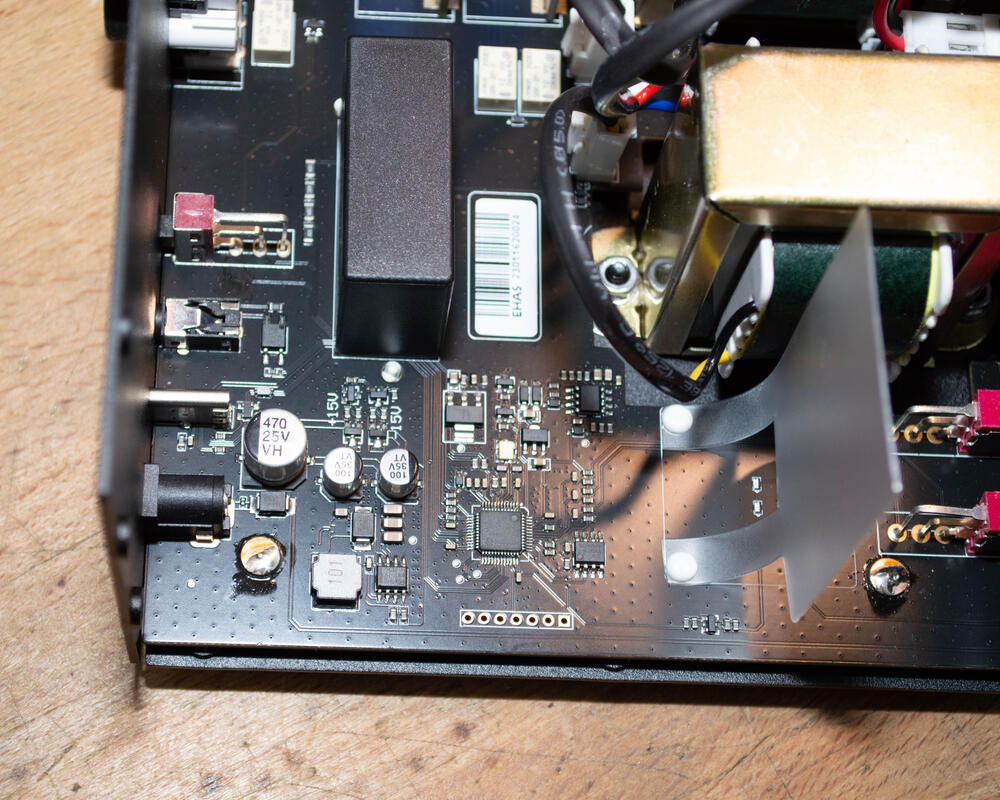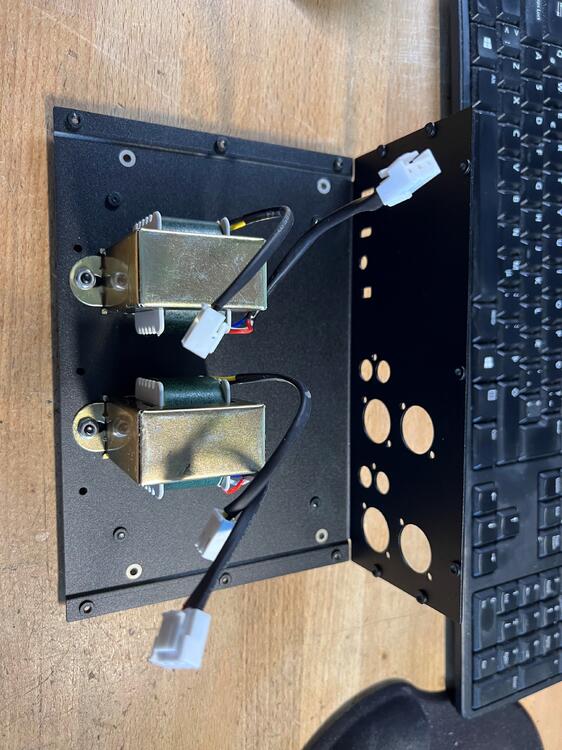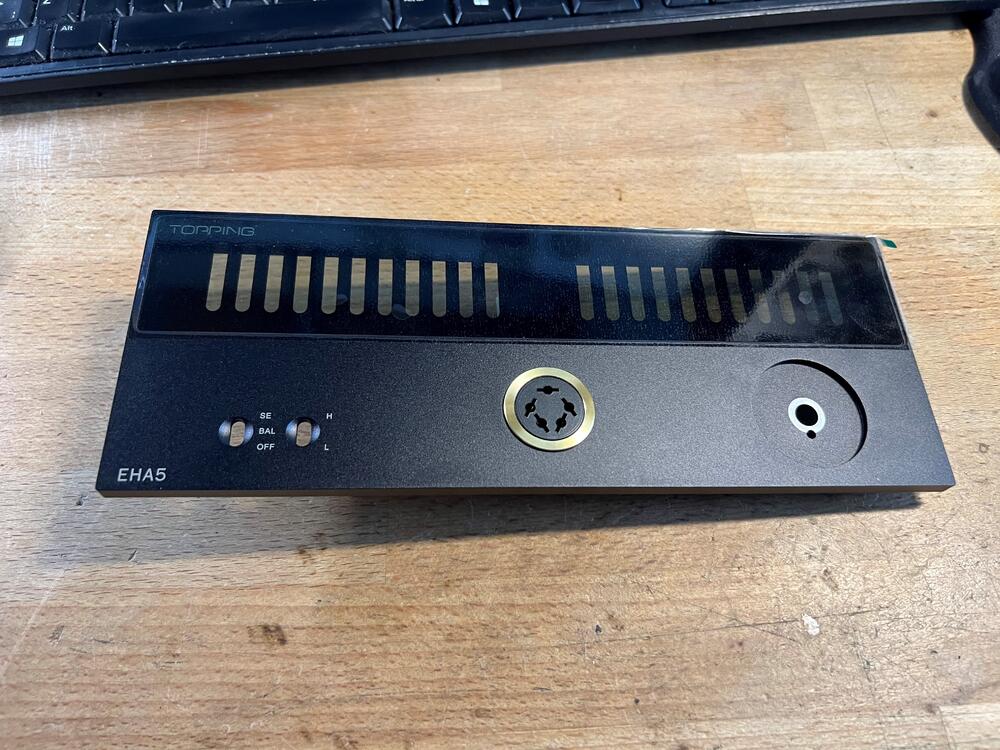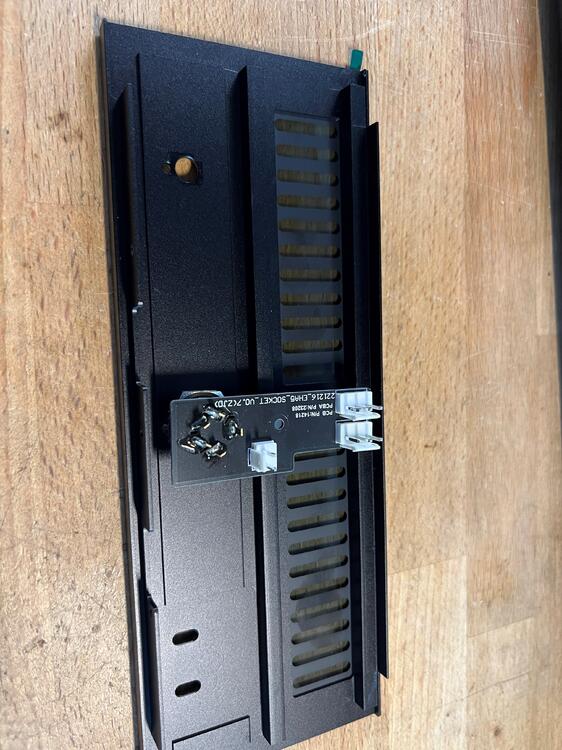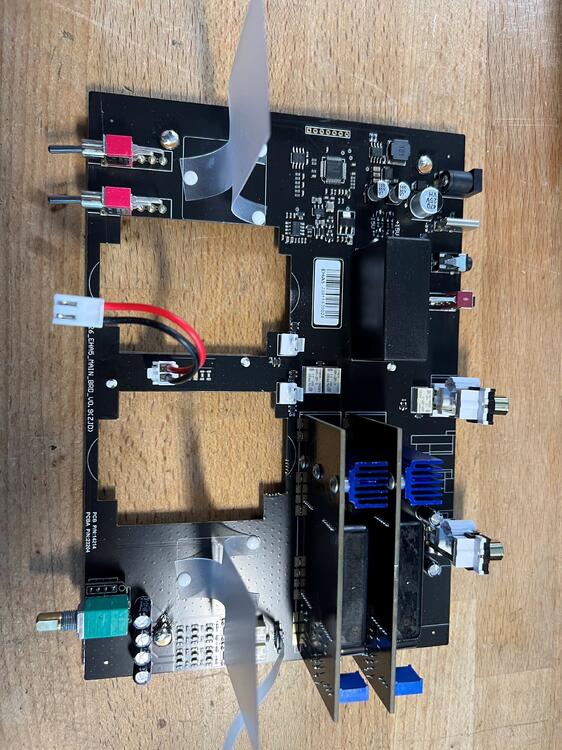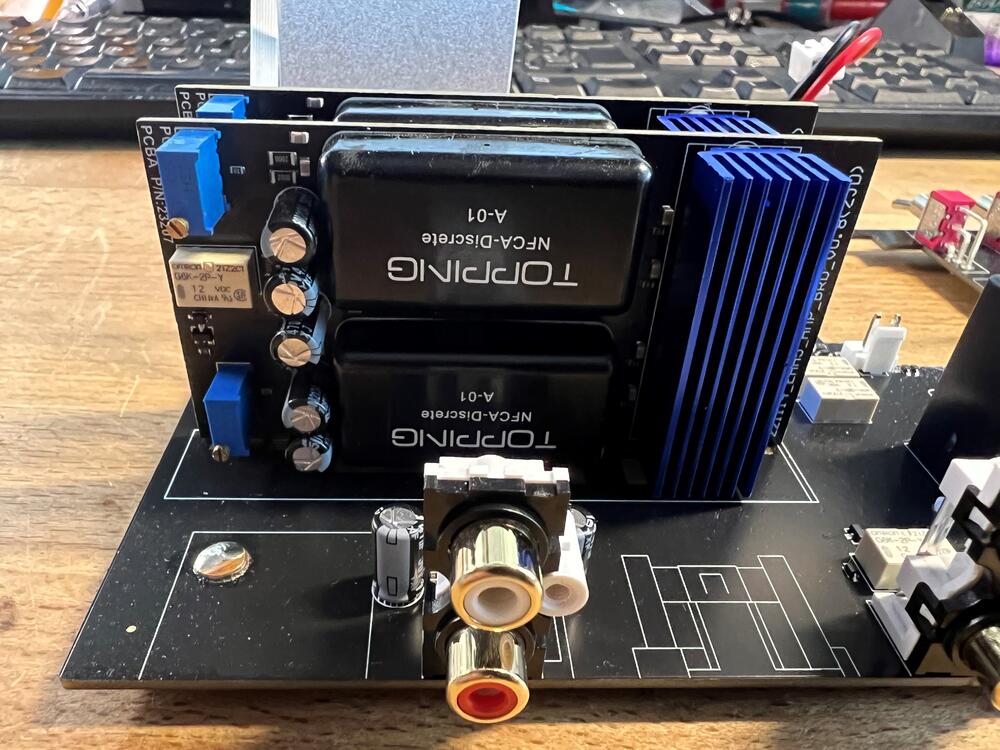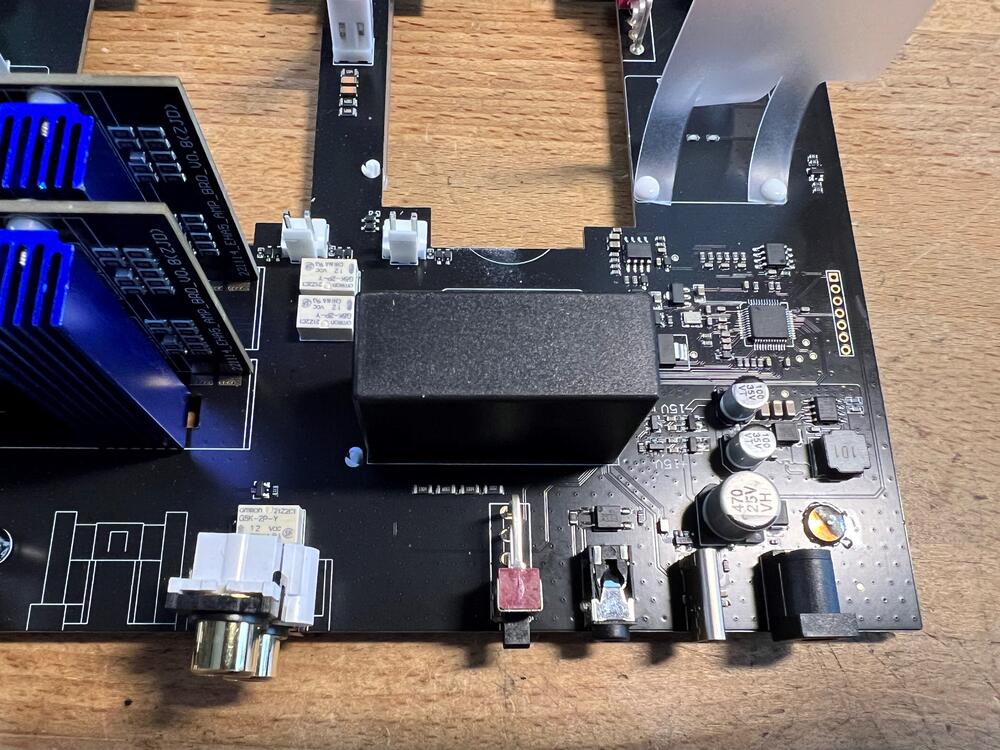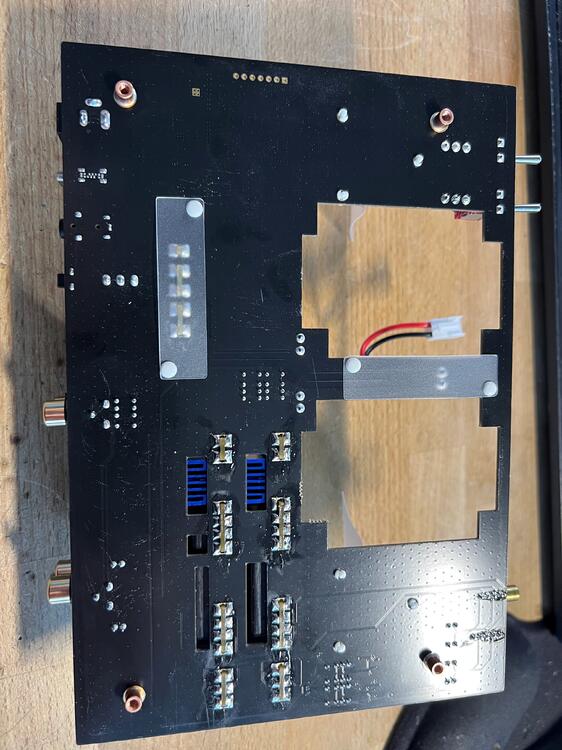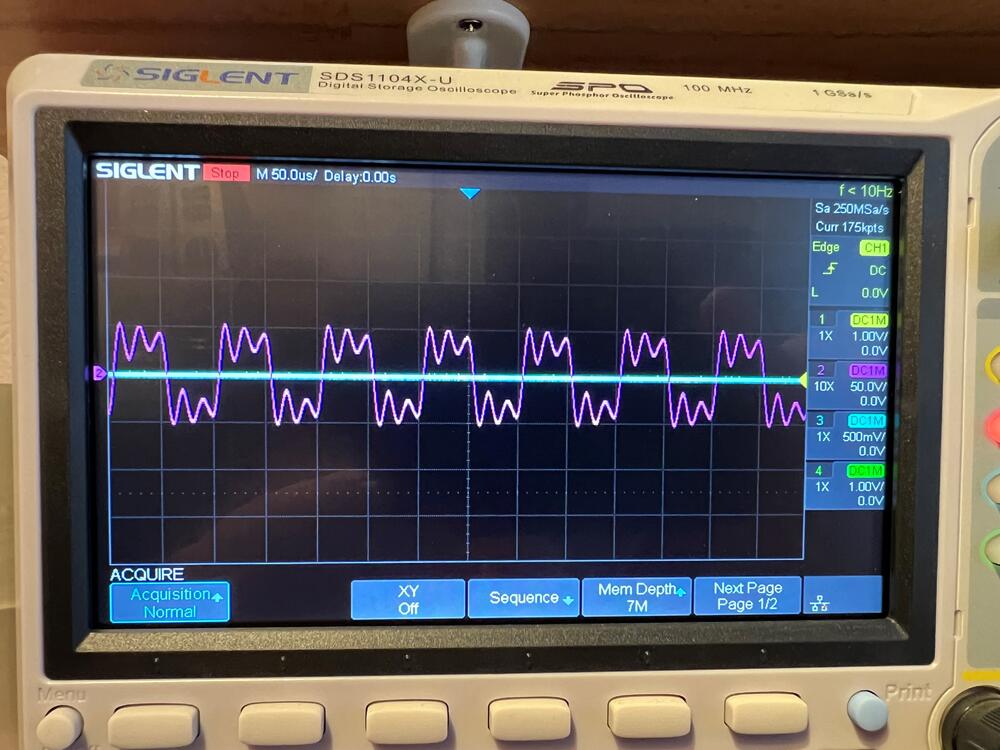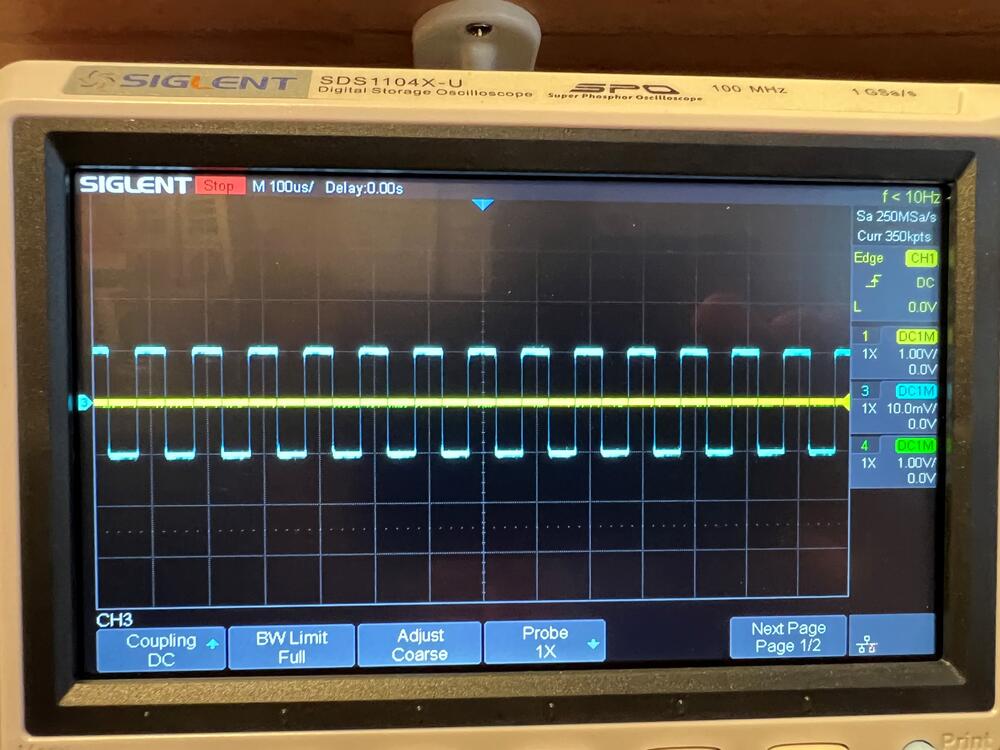Leaderboard
Popular Content
Showing content with the highest reputation on 05/15/2023 in Posts
-
Age of Apathy Solo Sessions Aoife O'Donovan 2022 https://album.link/i/1676379525 Example: Finally listening to the solo sessions of Aoife's Apathy album. It took me too long to get to it, but was very well rewarded with a superbly recorded set that allows me to just fall in love with her voice once again. It will become my go to over the full band sessions. Her and Sarah (above) just hit me in a way that very few others do.3 points
-
2 points
-
2 points
-
would need a higher voltage opamp. otherwise should work.2 points
-
Well this just arrived and as is our fashion, it has not been plugged in at all before I rip it apart. I'm having some camera issues (bloody Lightroom) so not as many as I'd like. Now first off why this belongs on a trashpile... here is the output: It's a pain to get a camera to focus between the transformers so I ended up grabbing the phone. Those are the ballast resistors, two 1M units in series and one 3M3 unit, all in 1206 package so likely 150V rated. Yeah no... just no, this is not good enough!! It gets worse though... It's a shit angle but here is how the transformers connect to the output socket: Now do you notice any parts on this PCB except connectors? Nope, neither do I... there is no protection on the output at all. No 5K1 output resistors nor the clamp circuit found on all later Stax adapter boxes. This thing will kill your headphones when pushed hard enough and there is nothing to protect the user if something goes wrong. Yup, pure class here... zero fucks given. Some other random pics, main amp runs off a +/-15V supply and the PSU brick is 15V/2A. Preamp presumably and the whole thing looks to be AC coupled through those electrolytic caps so that will not sound good at all. I see no other reason for those caps to be there so yeah, who does something like this. At least the volume pot is 4 gangs so the thing is fully balanced. Conclusion, without even plugging it in, this is a pile of crap and should not be used by anybody. The small changes to make this secure and sound good cost next to nothing but nobody cares. Best avoided unless you want to have a special talk to the manufacturer of your headphones as to why there are holes in the diaphragms... Now if I have time, I'm going to fully strip this thing down and design a PCB for the Stax socket which adds full protection and a clamp circuit. Fix the input caps and other issues that I find and this might a semi good 400$ amp. Personally I'd take a Stax SRM-313 over this pile of crap.1 point
-
Single 1/4" kerf dado. https://www.infinitytools.com/8-flat-top-dado-saw-blades Or https://www.boschtools.com/us/en/boschtools-ocs/router-tables-ra1141-201859-p/1 point
-
I don't even really like saxophones very much (sorry @MexicanDragon), and I think the first three notes of this song are one of the greatest sounds ever recorded. I could listen to them over and over again -- fortunately the song allows just that. The original lacks the same intense energy, but probably has a better groove1 point
-
1 point
-
I'll just say I interacted with one of these this week. Bias voltage circuit was completely dead after being turned on less than a handful of times. I didn't get to even try it before it was inoperable. The fake tube thing...WTF?1 point
-
so over at ASR, people have commented today that topping said that they used a step down transformer on the output of the step up transformer, an no capacitive load. flat out fraud this is... and completely meaningless published specs. if someone paid attention during the design process and actually used a real 120pf load, or even headphones, they would know how fucked up this is. the topping a90d may be decent. but my testing in the past indicates that stuff with huge amounts of open loop gain, and then huge amounts of feedback to get those magic distortion numbers usually sound like crap. this thing, and their power amp all use one switching power brick to make the positive voltage and then another switcher internally to make the negative voltage. so a switcher driving a switcher. not a great idea.1 point
-
And yet you argue the point about this E-Stat amp, despite the fact that someone with strong knowledge has actually done a tear-down and seen many issues....1 point
-
You just don't get the point, this is the worst product money can buy so how is this a gateway drug? Anybody who listens to it will think it is pure trash and electrostatics by extension if they don't know any better. Topping is a doing a great disservice to the electrostatic community by releasing this utter turd. Why couldn't they have put a proper power amp in there so it would have a hope in hell of driving the headphones? Fuck it, charge 600$ for it but make it at least serviceable. I'm not expecting the Chinese to put in any safety at all... that's just not in their culture, but at least make it sound better than the garbage Hifiman, Woo and King Sound were peddling. One thing I wanted to say and it is kinda odd, I believe the Stax socket on the EHA-5 is a genuine Stax article. It's not the classic Sato Japan made unit, but the new made in China as first found on the D10 and D50. The finish is identical and so are the pins. I know these sockets are available on the Chinese market but Edifer might be supplying these as an OEM. Now the real travesty here though is that the Stax SRM-252S appears to be finally out of production. It was a wonder that is stuck it out for so long, all through hole in a world cheap SMD assembly.1 point
-
That doesn't make any sense, why would protection on the low voltage side matter? How can the low voltage side know of a short or anything like that on the other side of the transformer short of a basic overload? There is nothing that connects the two, except the transformer. There are no large relays on the amplifier side to turn off the output in the event of something bad happening so I very much doubt there is any protection at all. Certainly not on the main, large PCB. Another factor are the large impedance swings of electrostatics which will mimic a dead short at times. The build quality is terrible, it's better than the Monoprice or Drop Cavalli units but yeah, these will not last for long. The main thing though is this sounds absolutely horrid. I had a SRM-1 Mk2 and a SRM-252S I needed to test yesterday so I connected them all together to the same source and matched the output voltage of them. The difference in sound quality is rather stark, even driving a set of SR-207's (so very light load) the Stax units walk all over it. The EHA-5 sounds just like the squarewave, it is under immense strain so very bright and broken sound.1 point
-
1 point
-
Thanks to the wonder of modern PCB manufacturing, this showed up yesterday: I bought the boards fully assembled as I'm lazy and I hate SMD soldering so I just had to add the connectors. To make it a single sided load (so the assembly would be much cheaper) the board had to be a bit wider than the stock board so one of the transformers had to be moved around 10mm. Just remove one screw and slide it to one side. Drill a new hole and it is done. Now the EHA-5 still sounds like shit but it is at least safe for the end user.1 point
-
and yet the audio precision actually reports .0008 % thd at 1khz. so much for that being worth anything. sure looks like about 10 volts per microsecond slew rate. pretty grim at higher voltage levels. winding transformers correctly really is not that hard. too bad the lundhal transformers won't fit inside the box. hmm, there is that size thing again. (usa_love) what really gets me is the really poor soldering job, probably there is a significant failure rate of topping products in the field. And yet led lit sails that makes you think there are tubes inside. my guess is that the koss box sounds better than this, for roughly the same price. quoting from someone who knows how to actually make transformers like this.. quote In a transformer winding, inter-turn capacitance is generally negligible compared to inter-layer capacitance. We can approximate the winding self-capacitance within a small factor by considering only the capacitance between winding layers, approximating the layer to a conductor sheet. The highest capacitance arrangement is when each layer is wound in opposite directions, so left to right on the first, right to left on the next. That's because the first turn of the first layer is opposite the last turn of the next layer, so there's twice the voltage per layer between those turns. As the energy stored in the self-capacitance goes as the square of the voltage, this more than offsets the lower voltage difference at the other side of the windings. A lower capacitance can be obtained by winding each layer in the same direction, returning between layers, so left to right, then left to right again. The voltage between layers is now uniform at the per layer voltage. end quote transformers made this way have to be partially done by hand. no winding machine currently available does this. its why esl63 replacement transformers are $500 each.1 point
-
Throw it out and start again? I mean this truly terrible stuff but I stripped it down yesterday and yeah... I can see why Topping has a reputation for failing a lot as this was probably soldered by people not being paid a whole lot. Some joints have barely any solder on them and there is flux everywhere. The transformers are clearly styled after the Stax SRD-7 units (down to the color of the wires) but who knows how they are actually wound. It is quite tricky and expensive to wind a really low capacitance transformer. The back of the Stax socket board and yup, straight links to the socket from the bias and the transformers. Look how dirty this thing is, it is covered in muck. Sorry for the shit pictures, I didn't want to drag out a better camera for this. This is not good... Here is what I'm doing to my own unit as I ripped off the Stax connector PCB: This simple board just adds some high voltage resistors to the bias line, adds output protection resistors (also HV units) and zeners to clamp the output so it can never go over 1150Vppss. The board is designed to go on the smaller pins of the socket so this could be fitted to the amp with the original board in place if the connectors are just cut off.1 point
-
Jest before I stopped playing with it last night I took some measurements, I fed it a 10kHz squarewave, 1Vpp from a function gen and while it was a pain to get a good ground in there, we are not dealing with high speed signals either. Here is the input to the amp: Nice enough squarewave but here is the output of the amp, set to my usual listening level: This was one leg of the output of the transformer, here is the other: Yeah.... this isn't great, is it? Might be the worst I've ever seen but I naturally forgot to measure the primary of the transformers and I've already started to rip the unit apart. I may do that later.1 point
-
Another fun weekend out autocrossing! Vroom, vroom! I never was able to put a clean run together and felt like I left at least a second or two out on the track, but we still were able to beat some of the modern 911 drivers. I was the only crossover in the field, and the most common thing I heard was "my wife really wants one of those!" I take it as a compliment. A few random observations: Had a ride along with my instructor driving his GT3. I see why people go crazy for them. What a machine. So much grip. I want one. Badly! There was a 911 Turbo in my run group and I can't believe how fast that thing is in a stright line. He was probably the second heaviest car in the field after me. Watching the older cars run the course is my favorite. They look so majestic out there and I'm glad the owners don't baby them. After-market exhaust on most cars is so stupid. You already are driving a sports car with factory sport exhaust. Making it twice as loud is silly. Some random photos I snapped.1 point






